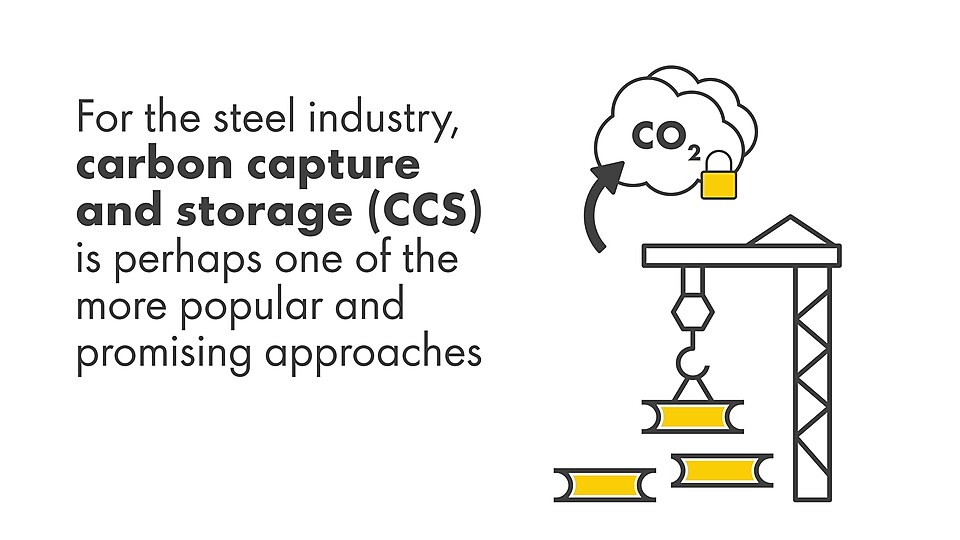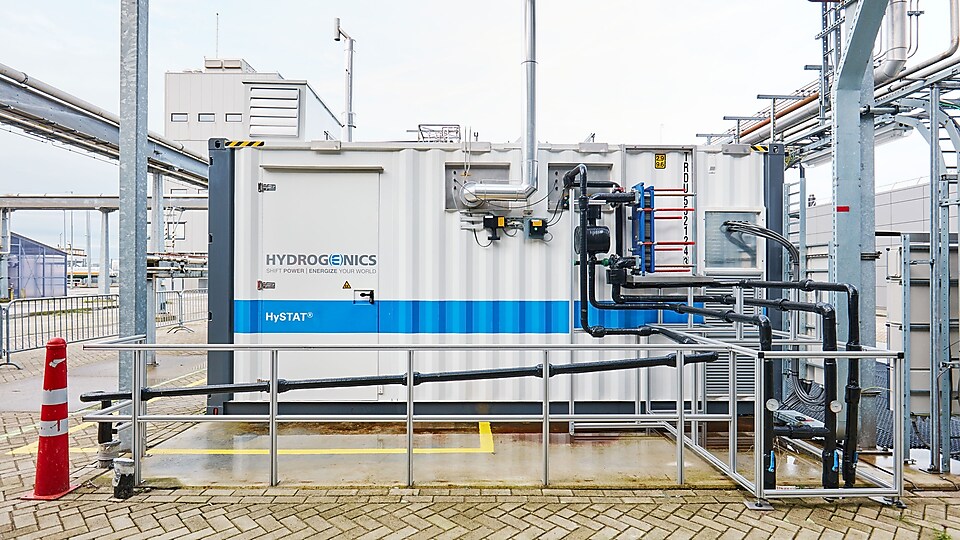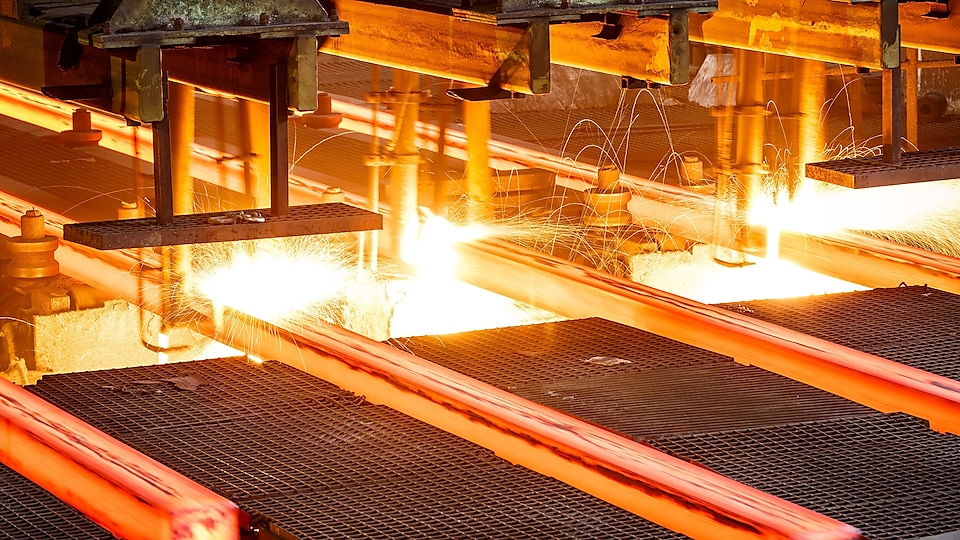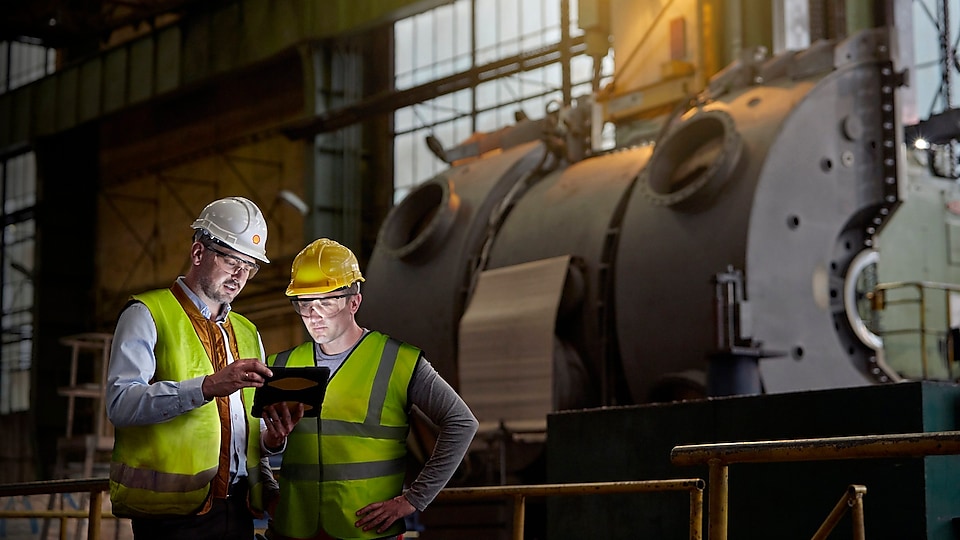
Like its close counterpart mining, the steel industry has an intricate role to play in the energy transition. While steel suppliers support the growth of renewable industries – like wind turbines and electric vehicles (EVs) – the carbon-intensive manufacturing required means that if the steel industry was a country, it would rank third in the world for carbon dioxide emissions1.
Though it might seem paradoxical at first, society in fact needs more – not less – steel to accelerate this transition. But to meet global energy and climate goals, emissions from the steel industry must fall at least 50% by 20502 – a difficult ask given that global steel production remains as emissions-intensive as it was 20 years ago3.
The question quickly switches then from “how much?” to “how is it made?” since, to balance increased growth with reduced environmental impact, a much larger proportion of future steel must be produced with fewer emissions attached. This has led to the rise in ”low-carbon”4, or “fossil-free” initiatives, all of which fall under the umbrella term of “green steel”, as companies strive to produce a product with the lowest carbon footprint possible. However, with no universal definition of “green steel”, could progress in this area be stunted?
Low-carbon strategies for steel producers to consider
With various terminologies and a range of low-carbon innovations and technologies being explored globally, the World Steel Association has helpfully grouped these approaches into three broad categories: carbon; hydrogen; and electricity5.
1. Carbon mitigation strategies
Because many processes, including steel production, are not able to be zero-carbon at this stage, carbon mitigation strategies are being used across heavy industry to deal with emissions that are, as of yet, unavoidable. For the steel industry, carbon capture and storage (CCS) is perhaps one of the more popular and promising approaches. This involves using various technologies to capture carbon dioxide emissions from the steelmaking process, before transporting them (if necessary) to a separate site, where they can finally be injected and stored deep underground.
Though the IEA suggests CCS is a “relatively advanced and cost-competitive option for dramatically cutting CO2 emissions,” public perception is somewhat mixed and scaling its infrastructure may prove difficult6. However, projects like Northern Lights – a partnership between Shell, Equinor, Total and the Norwegian government – aim to show how important CCS can be for carbon-intensive processes with limited alternative options, such as steel production.

For the steel industry, carbon capture and storage (CCS) is perhaps one of the more popular and promising approaches.
2. Substituting hydrogen for carbon

Hydrogen offers the industry another means of reducing emissions from the steelmaking process. Whether it is used as an auxiliary reducing agent within the blast furnace itself or as a sole reducing agent while producing Direct Reduced Iron (DRI), hydrogen is a cleaner alternative since its only waste product is water. And that’s not the only benefit: a project in Japan has successfully demonstrated a 20% emissions reduction by using DRI produced using hydrogen and carbon monoxide from natural gas7.
Because industrial sectors like steel cannot be easily electrified, as an energy-dense gaseous fuel, hydrogen can play an important role in decarbonising production - especially if it is produced through renewable-powered electrolysis and classified as “green”. “Green” hydrogen is allowing some companies to explore the development of effectively “fossil-free” steel. However, many of these technology platforms are not yet mature enough to be widely scaled or cost-effective. A more immediate solution for steel operators might therefore be to incorporate the use of “blue” hydrogen, produced as part of CCS plants like the Quest facility in Alberta, Canada.
3. Using an electrolysis-based process

Then comes electrolysis. While the iron and oxygen that make up iron ore can be separated by chemical reductants, electrolysis is an alternative way to achieve this same result. The benefit is that oxygen is the sole by-product, instead of carbon dioxide. The challenge however, is how to develop the technology so that it is both commercially scalable and cost-effective for steel producers. The main obstacle being how to source enough clean power to keep the entire method carbon-free.
A case in point is molten oxide electrolysis – a process that is being explored by a couple of industry groups and does not require traditional coke ovens or blast furnaces8. While it holds long-term potential for a cheaper and cleaner steelmaking process, only kilograms of iron have been produced using electrolysis to date, meaning its volume would have to multiply by around eight orders of magnitude for electrolysis to have a meaningful impact on the industry’s decarbonisation drive9.
Since each solution presents its own challenges, steel companies must carefully decide which pathway best suits their needs and capabilities. And the importance of this choice cannot be underestimated, especially since major reinvestment in – or refurbishment of – production facilities and equipment occurs only every couple of decades, with much of the world’s sites due to start this cycle relatively soon10.
But that doesn’t mean inaction is an option until that point. There are other more accessible and immediate solutions that can help steel operators reduce emissions until these larger-scale fixes are scalable. Collaborating with a strategic partner such as Shell Lubricant Solutions can help support the optimisation of equipment maintenance: whether through carbon neutral lubricants or oil condition monitoring like Shell LubeAnalyst, these actions can help steel facilities to start taking meaningful steps towards a more sustainable future, today.
Decarbonisation after all, is a journey and companies must work within their ecosystem to make continual progress. But this will only be possible through strong collaboration – within the sector and beyond – that can help decarbonise the entire value chain. As an organisation with experience in shaping these journeys, Shell is more than happy to help.
Footnotes
1 Mark Peplow. “Can industry decarbonize steelmaking?” Chemistry and Engineering. 13 June, 2021.
2 International Energy Agency. “Iron and steel technology roadmap.” IEA.org. October 2020.
3 Peter Levi, Tiffany Vass, Hana Mandová and Alexandre Gouy. “Iron and steel technology roadmap.” International Energy Agency. June 2020.
4 “Low-carbon steel” is used here in an emissions sense as opposed to a metallurgical sense. It is important to make this distinction since the term has historically been used to describe steel with a carbon content of less than 0.3%. However, the concept is now gaining traction outside of the industry as a comparison to terms such as “low-carbon electricity” or “low-carbon buildings”.
5 World Steel Association. “Breakthrough technologies.” WorldSteel.org. 2021.
6 Adam Baylin-Stern and Niels Berghout. “Is carbon capture too expensive?” International Energy Agency. 17 February, 2021.
7 Bellona Europa. “Hydrogen in steel production: what is happening in Europe – part two.” Bellona.org. 26 May, 2021.
8 Energy.nl. “High-temperature molten oxide electrolysis steelmaking (ULCOLYSIS).” Energy.nl. 28 September, 2020.
9 World Steel Association. “Electrolysis in ironmaking.” IEA.org. May 2021.
10 Cate Lawrence. “Why everyone is talking about ‘green steel’ at COP26.” The Next Web. 05 November, 2021.
More about Shell Lubricants
Explore our Lubricants Services
Explore our complete toolkit of services, gain full access to Shell expertise and get online and in-person support.
Insights & Expertise
Find out how lubricants can affect you and your maintenance costs, and what else you should think about, including getting the right partners involved.
Explore our Product Catalogue
Explore our range of high quality lubricants. Designed by technological experts, our products create substantial savings for businesses by helping to increase component efficiency, prolong equipment life and significantly reduce downtime.



